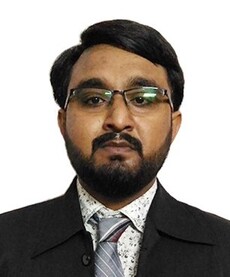Research Area Simulaton - S4:PFM Solidification
Phase-field modeling of thermo-mechanical properties in multiphase solidification microstructures
Advisors: Nestler (IAM-MMS), Denniston (UWO)
The aim of the 3rd generation in S4:PFM Solidification is to model the solidification process in FRTPs to predict the evolution of eigenstrains and residual stresses occurring during the molding process. The micro-mechanical multiphase-field model [1] based including the thermo-mechanical extensions of the first and second PhD generation will be extended by thermodynamically consistent chemo-mechanical driving forces [4] to capture multiphysical processes of diffusion, phase transformation and stress/strain evolution during solidification. The second objective of the 3rd generation is to combine the solidification model with the recent methods for crack propagation [2, 3] extended in the first and second generation of S4:PFM Solidification to analyze microcracking during the solidification process on scales resolving the individual fibers as well as on mesoscopic lengths.
References:
[1] D. Schneider, F. Schwab, E. Schoof, A. Reiter, C. Herrmann, M. Selzer, T. Bӧhlke, B. Nestler, On the stress calculation within phase-field approaches: a model for finite deformations, Computational Mechanics, (2017) 203-217, DOI: 10.1007/s00466-017-1401-8
[2] D. Schneider, E. Schoof, Y. Huang, M. Selzer, B. Nestler, Phase-field modeling of crack propagation in multiphase systems, Computer Methods in Applied Mechanics and Engineering, (2016) 186-195, DOI: 10.1016/j.cma.2016.04.009
[3] B. Nestler, D. Schneider, E. Schoof, Y. Huang, M. Selzer, Modeling of crack propagation on a mesoscopic length scale, GAMM-Mitteilungen, (2016) 78-91, DOI: 10.1002/gamm.201610005
[4] A. Choudhury, B. Nestler, Grand Potential formulation for multi-component phase transformations combined with thin-interface asymptotics of the double. Physical Review E, (2012) 85(2):1–36, DOI: 10.1103/PhysRevE.85.021602

